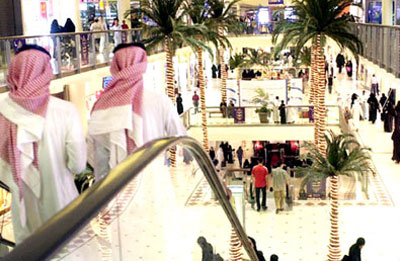
Mixed growth outlook for Mena states in 2013
Dubai, October 29, 2013
The economic outlook for countries across the Mena region varies markedly, with the oil-exporting countries led by the GCC registering solid growth in 2013, while the "Arab Spring" countries continue suffering, according to a report.
The divergence in economic prospects between oil exporting and oil importing countries has grown since the beginning of the Arab Spring uprisings, said the Institute of International Finance (IIF) in its report.
A global association of more than 470 financial institutions, IIF aims to support the financial industry in the prudent management of risks, including sovereign risk; the development of sound industry practices and standards.
According to IIF, the 16 countries covered by its overview are expected to register overall GDP growth of 2.9 per cent in 2013, rising to 3.8 per cent in 2014.
The averages, however, mask a sharp divergence as the 10 oil exporting countries show growth of 3.2 per cent and 3.9 per cent in 2013 and 2014, respectively, while the non-oil exporting countries struggle with 1.8 per cent growth in 2013 and 2.4 percent in 2014, said the IIF in its updated forecast for the Mena released today.
More telling are the respective fiscal positions of the two groups where oil exporters achieve average surpluses of 6.3 per cent of GDP while oil importers face deficits of 10.3 per cent in 2013 and 2014. For the GCC countries, the average surplus is 10.8 per cent of GDP.
“After nearly three years of political turmoil and uncertainty, the Arab Spring countries are yet to see the light at the end of the tunnel,” remarked Dr George T. Abed, senior counselor and director for Africa and the Middle East at IIF.
“The popular uprisings against authoritarian rule and for human dignity have morphed into various forms of political, sectarian or armed conflicts, dimming the outlook for political stability and economic recovery,” he noted.
Countries facing various degrees of political instability, namely Egypt, Syria and Tunisia, and to a lesser extent Jordan and Lebanon, will continue to struggle to achieve even modest growth with high unemployment, persistent macroeconomic imbalances and challenging prospects.
“Oil exporting countries, except for Libya and Iran, continue to record robust growth rates and large financial surpluses while maintaining steady progress in diversifying their production base,” said Dr Garbis Iradian, the deputy director, Africa and the Middle East at IIF and principal author of the report.
“The outlook remains favorable. Ample financial resources, healthy banking systems and continued improvement in the business environment have supported private sector investment and growth and reinforced economic diversification in the GCC,” he stated.
The IIF report noted that more meaningful economic co-operation, involving both the public and private sectors and instituted within a medium-to-long term framework anchored in political stability and fundamental reforms, could bring about vast benefits to both donors and recipients across the whole region.
“Among the non-oil exporting countries, Egypt remains a keystone state for the future of the region as a whole,” revealed Dr Abed.
"At the geostrategic level, a closer alignment of the new regime with the broader interests of the three largest GCC countries bodes well for political regional stability. Potential exists for economic co-operation as well, which would be easily expandable to other countries in the region and could vastly improve economic prospects," he added.
Saudi Arabia, the UAE and Kuwait have already provided critical economic aid to Egypt and Jordan and have maintained constructive economic relationships with Tunisia and Morocco, said the IIF in its report.
On the UAE prospects, IIF raised its 2013 growth forecast to 4.7 per cent (from 3.9 per cent previously) on higher than expected oil output during the first three quarters of this year.
Nonhydrocarbon real GDP growth is forecast to accelerate from 4.1 percent in 2012 to 4.6 percent in 2013, driven by higher government capital spending in Abu Dhabi and continued robust growth in trade, tourism and transportation in Abu Dhabi and Dubai, the report stated.
Dr Iradian said despite its favorable near-term outlook, IIF has reservations about the renewed cycle of risk taking, as shown by the strong recovery in real estate and the sharp increase in equity market prices.
“IIF welcomes the recent plan of the UAE Central Bank that includes limits on banks’ exposure to real estate and government-related entities. Furthering structural reforms, strengthening federal institutions and GREs corporate governance, and improving risk management practices are also important to reinforce the UAE’s resilience to external shocks," he added.-TradeArabia News Service







